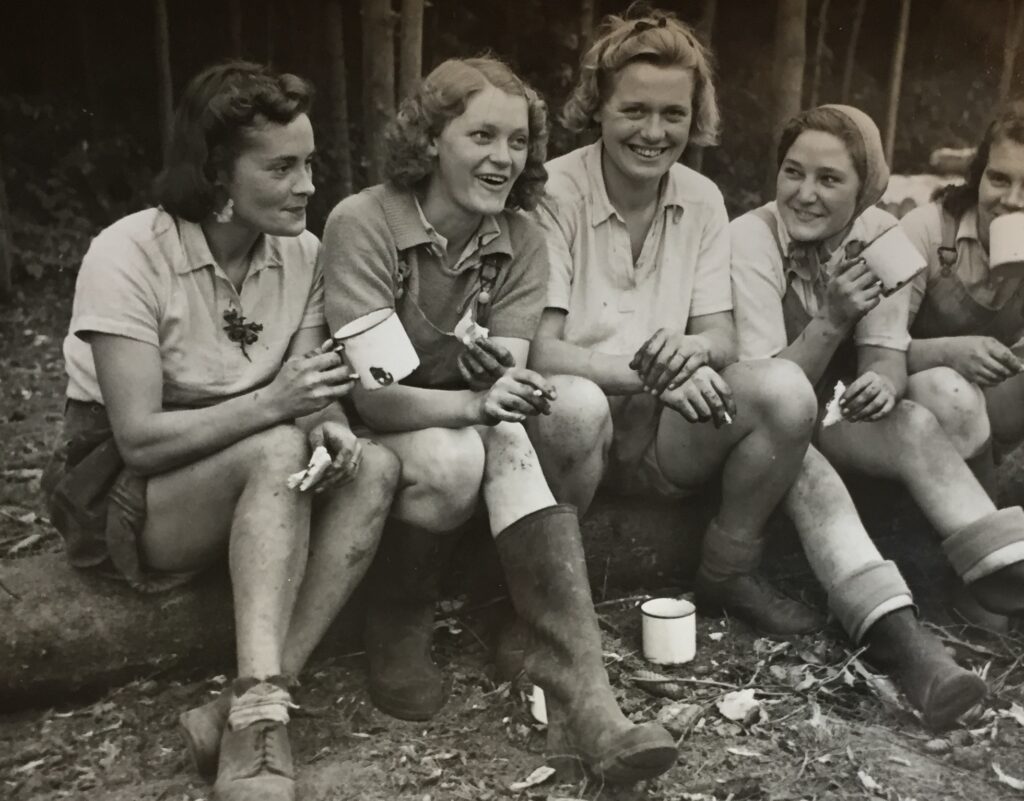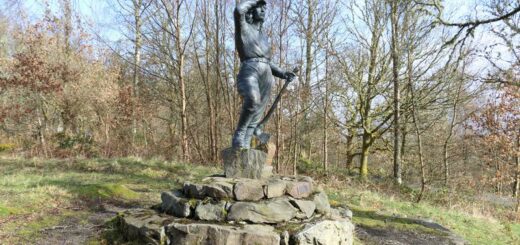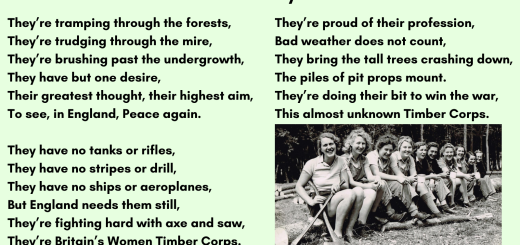April WTC Photo of the Month
This month we look at a photograph of 5 Lumber Jills, taken by Keystone Press, a prominent press agency during the Second World War. Taken at eye level, the photo shows women communally taking their break; eating sandwiches, drinking tea, and smoking. The women have personalised their WTC uniform, whether it be a small twig in collar of the woman on the far left, to the headscarf worn by the woman on the right-hand side.

When talking about the work of the Women’s Timber Corps, journalists often drew on the well-established health benefits of the outdoors. Journalists regularly used adjectives such as ‘fit’, ‘happy’, ‘well-built’, and ‘tough’ to demonstrate the positive physical and psychological health benefits of outdoor work. They represented an idealistic interpretation of forestry work, to not only celebrate women’s work in the forests, but encourage other women to enrol.
On one level, press photographs of women’s forestry work, such as the one above, supported this textual commentary. Yet, they also went further in demonstrating how women had taken ownership of the forest space. Press photographs depicted women exuding power through their bodies – seen through their dirty bodies, compromising typical signifiers of femininity during the period.
This photograph taken by Keystone Press Agency emphasised women’s bare legs and arms. While the interwar period witnessed a growth in depictions of women in revealing sports clothing, these representations did not extend to women undertaking labour. It is therefore remarkable that all women had their bare legs on display.
Nearly all the photographs in the set show women with their dungaree legs rolled up to reveal their thighs, capturing the realities of dirty, hard work. Women’s legs were unclean and grazed; so too were their hands, displaying dirty fingernails. This was a new type of femininity for adult women, building on some of the visual iconography of the Girl Guides movement.
While some women sat with their legs crossed, others sat with them apart. The middle woman in the above photograph was clearly the focal point – and she indeed had her legs wide apart, transgressing the conventions of bodily comportment for women. In doing so, the photographer naturally drew attention to the muscles around her knees and calves, which are especially sculpted.
Though this photograph might appear a simple moment capturing 5 Lumber Jills on their lunch break, when read closely, and in line with previous photographs and textual commentary from the period, it shows just how transgressive women’s forestry work was during the Second World War.


